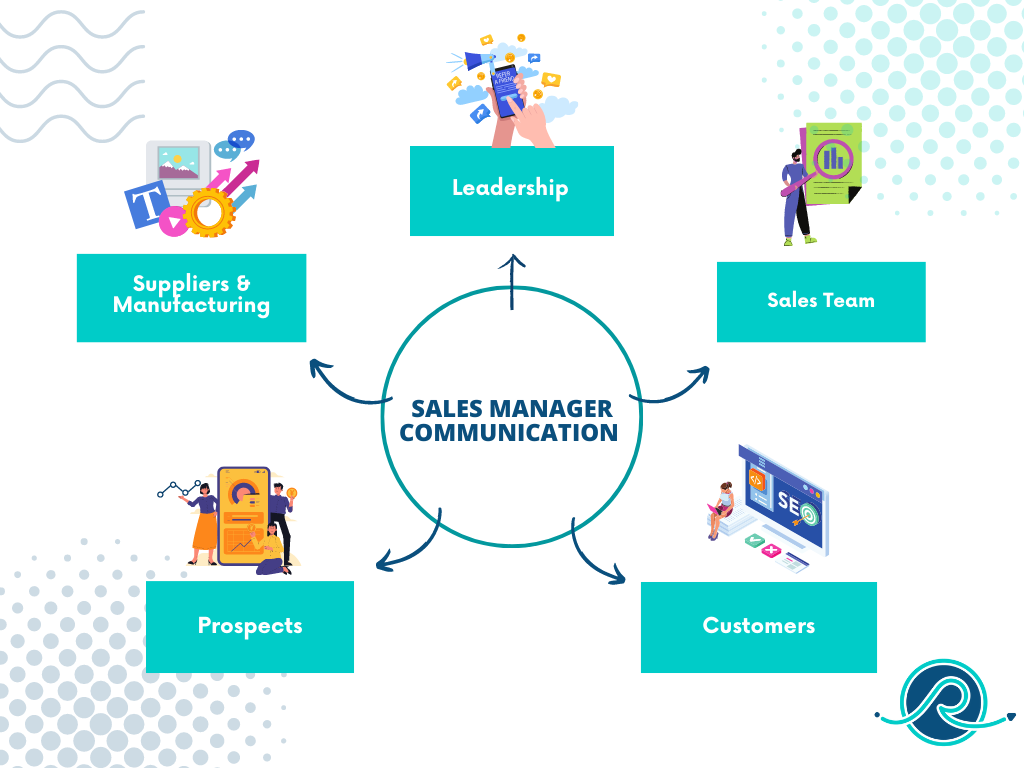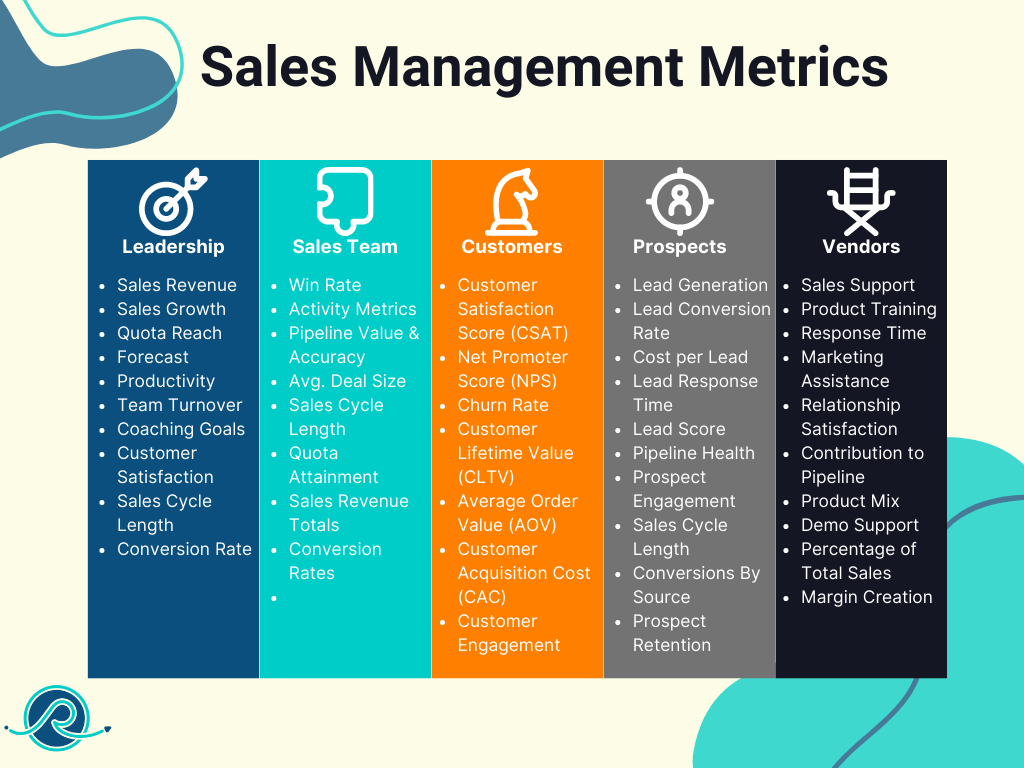As if modern Sales Management wasn't hard enough, let's take a look at the communication cycle and metrics needed to effectively communicate and measure success in sales leadership. To be successful, Sales Managers need to communicate with five key groups daily. Consequently, there has to be a way to effectively measure communication and resulting performance with each group. At RSM, we like to measure things, especially sales management related things. This article explores metrics that you can use to build relationships and measure mutual successes. By using these metrics, you can better understand your communication style and how it affects sales success. So, let's dive in and start measuring!
As sales managers, we interact with various groups daily, and communication is key to our success. The sales management communication chart illustrates the five essential groups we engage with - leadership, sales team, customers, prospects, and supplier/manufacturing. A seamless flow of information is crucial to building trust and maintaining healthy relationships with each group. Effective communication enables us to stay aligned with leadership, motivate our sales team, understand our customers' needs and preferences, convert prospects into loyal customers, and maintain strong partnerships with our suppliers. As sales managers, we must make a conscious effort to communicate regularly, clearly and transparently with each group to achieve our sales goals and promote growth. Remember, communication is the cornerstone of successful sales management.

The Sales Management Communication Chart
Sales growth relies on metrics that convey progress, forecasting, and results. Effective sales management entails comprehending these metrics and communicating them to leadership, the team, customers, prospects and vendors. These metrics enable you to track performance, make informed decisions, identify opportunities, and demonstrate value to stakeholders. Transparent and concise communication of these metrics facilitates collaboration, boosts morale, and builds trust with your audience. Consider developing the following metrics to cater to your audience:

RSM, Sales Management Metrics
This diversity in metrics underscores the need for increased collaboration beteeen sales managers and the organization. To achieve sales success, it is crucial to combine business science with effective human leadership. This blend empowers managers to leverage diverse perspectives, adapt to changing customer expectations, navigate complex sales processes, foster team motivation and growth, collaborate across functions, utilize data-driven insights, and promote continuous learning. By embracing this approach, sales managers can create a collaborative culture that drives success in today's dynamic sales landscape.
